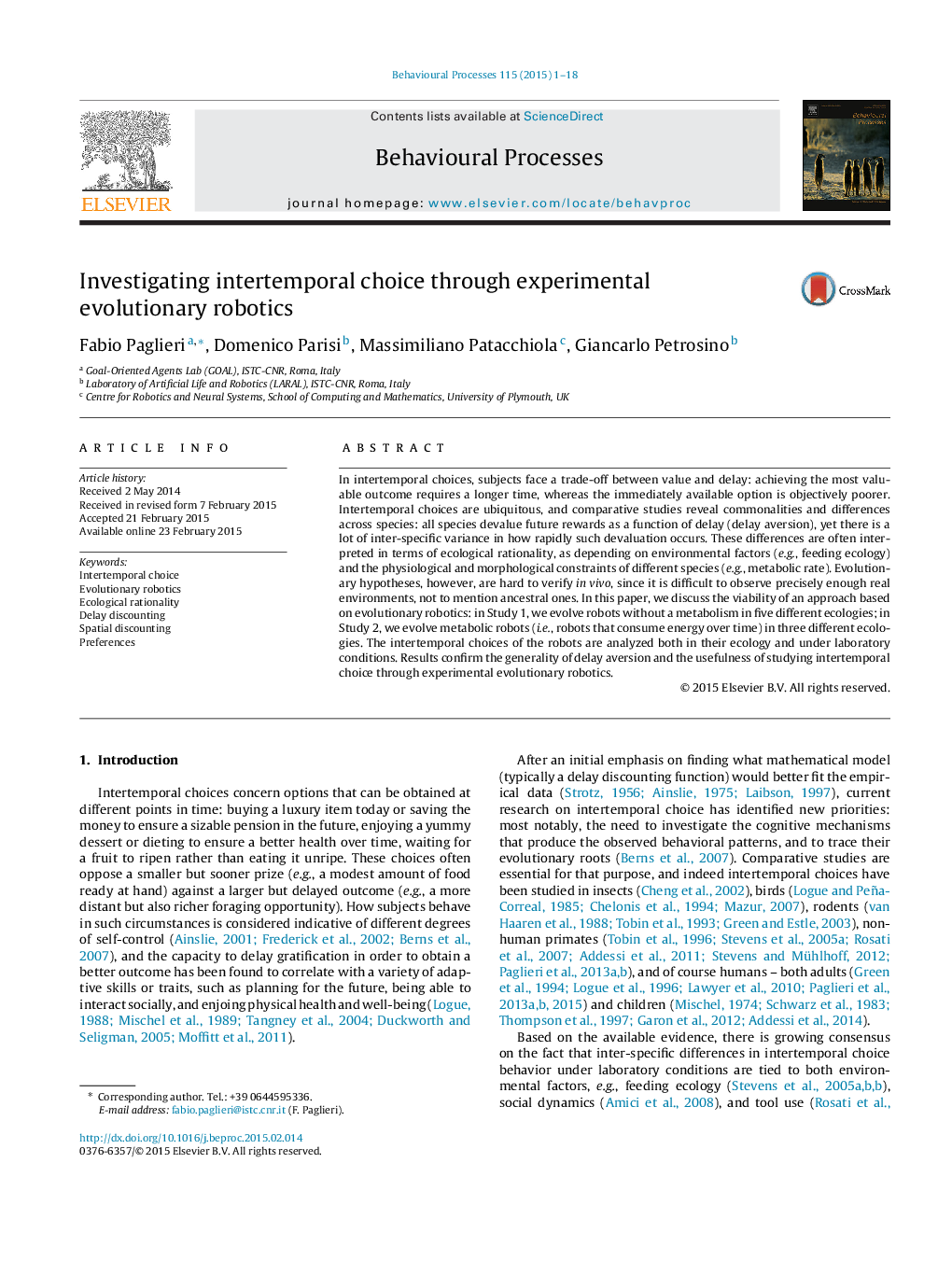| Article ID | Journal | Published Year | Pages | File Type |
|---|---|---|---|---|
| 2426584 | Behavioural Processes | 2015 | 18 Pages |
•A novel synthetic method is described: experimental evolutionary robotics.•We discuss two choice studies with simulated robots, in 8 different ecologies.•Robots evolve delay aversion, sensitivity to opportunity costs, and restraint.•Richer ecologies produce faster adaptation but less robust choice strategies.•Experimental evolutionary robotics can usefully complement naturalistic methods.
In intertemporal choices, subjects face a trade-off between value and delay: achieving the most valuable outcome requires a longer time, whereas the immediately available option is objectively poorer. Intertemporal choices are ubiquitous, and comparative studies reveal commonalities and differences across species: all species devalue future rewards as a function of delay (delay aversion), yet there is a lot of inter-specific variance in how rapidly such devaluation occurs. These differences are often interpreted in terms of ecological rationality, as depending on environmental factors (e.g., feeding ecology) and the physiological and morphological constraints of different species (e.g., metabolic rate). Evolutionary hypotheses, however, are hard to verify in vivo, since it is difficult to observe precisely enough real environments, not to mention ancestral ones. In this paper, we discuss the viability of an approach based on evolutionary robotics: in Study 1, we evolve robots without a metabolism in five different ecologies; in Study 2, we evolve metabolic robots (i.e., robots that consume energy over time) in three different ecologies. The intertemporal choices of the robots are analyzed both in their ecology and under laboratory conditions. Results confirm the generality of delay aversion and the usefulness of studying intertemporal choice through experimental evolutionary robotics.
